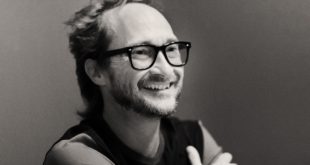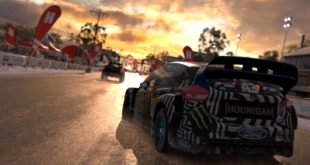Ed Boon knows fighting games. He’s been behind the Mortal Kombat series since its first release in 1992, and working on fighting games ever since. The series has become known now for it’s slower paced, more methodical approach to fighting games compared to lightning fast titles like Street Fighter.
Ed Boon is now the creative director of NetherRealm Studios, who are releasing Injustice 2 this week. Injustice 2 is the second in a series of games that sees DC heroes and villians come together to kick seven shades of something out of each other, for a variety of reasons. It’s launching alongside a pro tour that will see up to $600,000 up for grabs, the same prize pool for monolithic Street Fighter V’s esports offerings.
At a UK launch event last night, we spoke to Ed Boon about the differences between Mortal Kombat and Injustice, the challenges with balancing fan-favourite characters and also their plans for the future of Injustice 2, which is currently getting a lot of critical acclaim in reviews. Critics have praised the gear system that adds loot boxes to the game (hi, 2017) but also the clash system, which pauses a frantic combat to have players engage in a brief bluffing game mid-fight. It’s better than it sounds in practice, adding a touch of gambling to a brutal fight.
Esports Pro: From an esports angle, Netherrealm have announced that Injustice 2 is going to have a large presence over the next year with several fighting events. Is this a new focus for the team?
Ed Boon: Well it’s actually been something that we’ve been working towards since Mortal Kombat 9, which was six or so years ago, maybe longer, and it’s every game that we do, we really want to embrace esports and embrace the whole competitive fighting scene more and more, so Injustice 2 is really everything we’ve learned with Mortal Kombat X, Injustice 1, Mortal Kombat 9 applied to this game.
Esports Pro: As fighting games are becoming a more niche genre and survival is largely down to the fighting game community, has that changed how you develop games? Do you have to interface with them more?
Boon: It has. Fighting games at one point became very complex and only the best of the best players could really see all the cool stuff that’s in it. Every game that we make, we really make a conscious effort to make it as accessible as possible so everybody can do a super move, everybody can pull both triggers, everybody can do an x-ray move in Mortal Kombat and reach the level of execution that you need to do to pull off special moves, we really broadened that so as many people as possible can play and enjoy our game.
Esports Pro: How do you balance that accessibility for new players with the depth that fighting game tournament players expect?
Boon: We put many features in the game that are very deep and harder to access for those tournament players and the casual, mass market audience usually won’t experience it but it’s there, deep down, for those people who are going to dissect it and count frames and do all those really intricate things. So we put stuff at the high level and provide a lot of options for players at the low level.
Esports Pro: How do you go about balancing a game with so many well-known characters to be competitive as well?
Boon: Well I think it’s kind of similar to how we’ve balanced the Mortal Kombat characters. With the addition of the gear system, certainly people have been asking, “Well, what do you do when somebody has a level 20 Aquaman against a level 5 Supergirl?” Or something like that. And the way that we’re addressing it is we actually have different modes of play. You can have a tournament mode play where it turns off all of the gameplay aspects of the gear and just lets you use the costumes as far as visuals and then puts you on a level play field, kind of like playing regulation billiards or soccer or something like that where we have a defined regulation mode.
Esports Pro: So going back to characters, there’s a lot of different options in the game. How do you ensure that you get a good mix of different characters that comic fans enjoy while also steering close to the archetypes you need to make a compelling experience?
Boon: Inherently the DC characters are pretty diverse and there’s a wide range of them. You have varying sizes and species. But also we try to pick characters that are different from each other, so we’re not going to pick Robin, Nightwing, and all of the different Robins and put them all in the game, we just want to have one. So Robin has swordplay, but he plays different from Batman who is more about fighting with his fists and gadgets. Naturally though, a lot of the DC characters just have such a wide range of characters that it becomes inherited.
Esports Pro: And would you say that you guys have a list of fan favourites in the office? or would you say that you also pick people like, “Hey, we need a really big, heavy brawler here”?
Boon: We do that but then we also listen to players who communicate who they want to see on social media, Twitter, Facebook and all that just to keep our ear to the wall to see which characters people want. Red Hood was certainly a character that got so much fan requests that we had to put him as one of our DLC characters.
Esports Pro: How do things like the Clash mode, for example, that you guys have added, how does that play into the psyche of the fighting game community? It feels like the digital equivilant of “popping off.”
Boon: Sure, yeah. It certainly introduces a really big dramatic moments where the action stops and you have to make this big decision of, “I have these precious metre bars, how many am I going to use in this particular instance?” So I think it just adds a level of suspense to it as well as another layer of strategy.
Esports Pro: What are you most excited about that you’ve managed to include in Injustice 2?
Boon: Game feature-wise, I think we’re most excited about the gear stuff but at the same time, we’re also very excited about the tournament-level play and the features that we put in for tournament play.
We really are expecting this to have a long life, especially as we continue to release DLC characters. We’re going to have at least nine additional characters that are going to be released after the game launches and that’s really going to keep things competitive and changing and provide a fluid metagame that should keep fans coming back.
Esports Pro: So this is a long term project for you guys?
Boon: Oh, we’re absolutely committed to supporting it. I don’t know how many years but it certainly will be more than one year, that’s for sure.
Esports Pro: With Mortal Kombat, you guys already have a community there behind it. How have you guys gone about building a community from Injustice and Injustice 2?
Boon: We’re fortunate enough that there are some competitive players who just really like the style of our NetherRealm games, the pacing, the intensity, the freneticness of it and there’s some of our NetherRealm DNA in both Injustice and Mortal Kombat and so we’re fortunate enough to have those players follow us as we go along this journey, so we do plan on supporting all of those players with that.
Esports Pro: What’s really exciting for you about Injustice 2?
Boon: Injustice 1 did really well for us and everything that everybody was expecting and wanting us to do, with more characters, more environments, a new story that explains what happens with Superman and Batman, we’ve done all that. Then after that, we’ve also thrown in new features, like the gear system, which is really what I think separates Injustice 2 from Injustice 1 and really makes it feel unique and new and different from any fighting game.

 MCV/DEVELOP News, events, research and jobs from the games industry
MCV/DEVELOP News, events, research and jobs from the games industry




